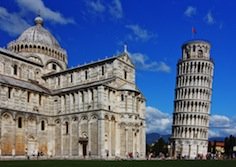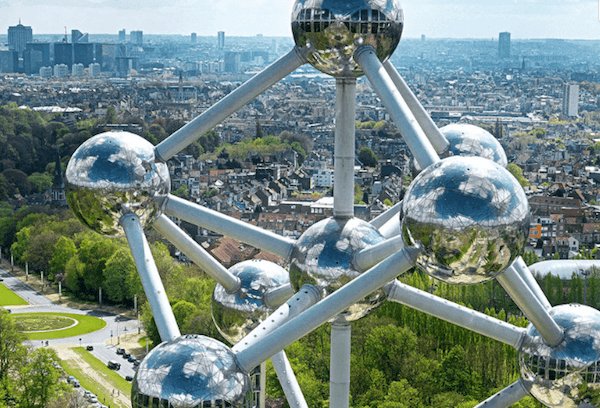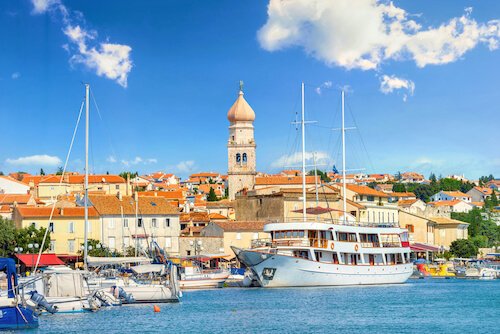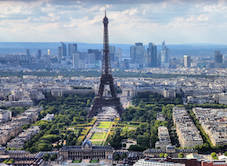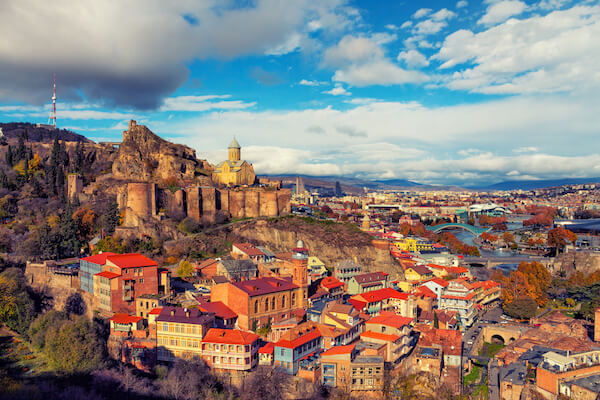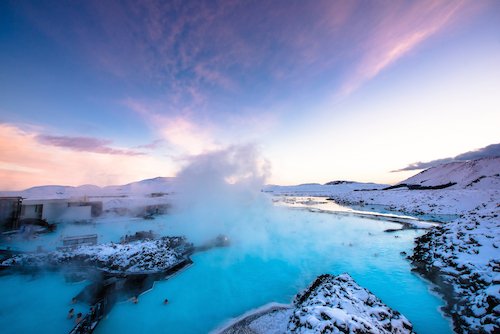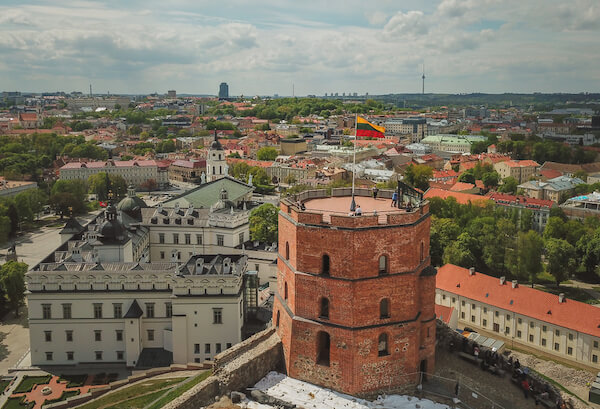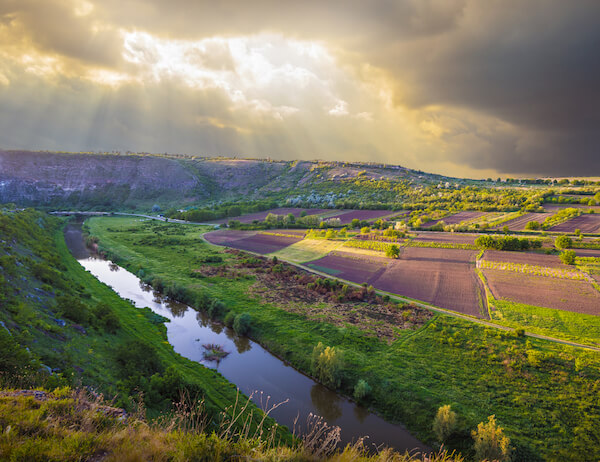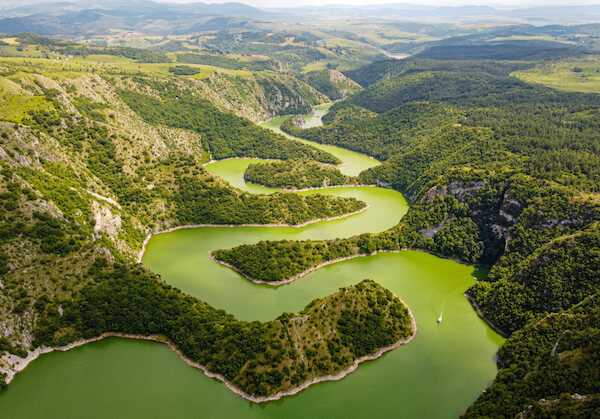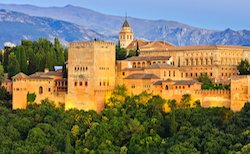Italy Landmarks
Here on this page you will find 10 Famous Italy Landmarks and Attractions in Italy with fascinating information - actually this not only for kids but for all who want to know more about Italy and famous landmarks.

Italy is one of the most popular tourist countries in the world and the top country to learn about ancient Roman history. There are so many famous monuments, buildings and castles in Italy, but these top 10 landmarks should be recognised by everyone!
10 Italian Landmarks everybody should know
1. Colosseum in Rome
 Colosseum in Rome
Colosseum in RomeThe Colosseum in Rome is one of the landmarks most people can easily link to Italy. The huge oval amphitheatre stands in the city centre of Italy's capital city of Rome and the construction of the colosseum was started in 70 AD/CE under Emperor Vespasian. This is the largest still standing amphitheatre in the world!
Built in Roman design borrowed from the Greeks, the amphitheatre was built in a dried up lake. About 50,000 people could be seated on the steps of this huge ancient amphitheatre.
The colosseum was the place where the Romans held their popular fights and games such as gladiator games, animal hunts and mock sea battles.
2. Italy Landmarks:
Roman Forum in Rome
 Roman Forum with the ruins of the Temple of Saturn
Roman Forum with the ruins of the Temple of SaturnAlso in Rome, right next to the Colosseum, you will find the 'Foro Romano'.
The original ancient town's Roman Forum or central square is a magnificent sight. This forum once was the meeting place and centre of daily life and activities of this city. This was the place to hold public speeches, gladiator battles and conduct business and criminal trials.
There are ruins of the temples, palaces and buildings of ancient Rome. The ruins of the Temple of Vesta and Temple of Saturn still show imposing structures.
The forum was built around 800 BC/BCE and was in use for some 1400 years! The ruins of the buildings and temples, however, were only discovered during excavations in 1803!
3. Leaning Tower in Pisa
 Leaning Tower of Pisa
Leaning Tower of PisaThe famous Leaning Tower is in fact Pisa Cathedral's bell tower, in Italian called 'campanile'. The tower was constructed in 1173 but the structure was miscalculated and built on not so solid ground, so the tower began leaning early on!
It is said that Italian scientist Galileo Galilei used the tower for various gravity experiments, such as dropping various objects from the top of the tower.
The tower is only about 56 m/ 183 ft tall while the tower's tilt is actually more than 4.3 m/ 14 ft, when measured. Meaning the top is leaning over so much the towner seems to fall. The place where to Cathedral (duomo) stands is called Piazza dei Miracoli which means Square of Miracles, and is an UNESCO Heritage Site.
In 1999 some soil was taken away from underneath the tower, to lower the degree of the tilt and pull the tower more upright so it would not topple over. If you want to climb to the top of the tower, there are 273 steps to climb!
4. Italy Landmarks:
Canale Grande in Venice
 Grand Canal and the Rialto Bridge in Venice
Grand Canal and the Rialto Bridge in VeniceThousands of tourists come to Venice every year to see the houses built on wooden piles along the many canals and waterways of the city. Today there are about 400 wooden gondolas still travelling in the canals and many more water taxis ferry people across the city.
Venice is called Venezia in Italian. St Mark's Square with the famous St Mark's Cathedral (Basilica San Marco) and the campanile (bell tower) are major attractions. The city's palaces and houses can either be reached by boat or foot, there are no cars driving in this city!
Three bridges cross the over 4 km/ 2.5 miles long Grand Canal, of these is the Rialto Bridge. The Ponte di Rialto is the most famous of these bridges and also the oldest. By the way, the Canal Grande is in average only about 5 m/ 17 ft deep.
5. Italy Landmarks:
Arena in Verona
 Opera Festival at the Arena di Verona
Opera Festival at the Arena di VeronaThe 'Arena di Verona' is a massive amphitheatre and the second biggest in the world, after the colosseum in Rome.
In Roman times, the amphitheatre was used for gladiator fights and theatre performances. Today the Verona Arena is used for an annual opera festival in August, which is very popular with tourists from all over the world.
In Verona, you can also visit the famous balcony at the house of Juliet. Shakespeare's popular love story of Romeo and Juliet is said to have its origins in this town.
6. Italy Landmarks: Pompeii Ruins near Naples
 Italy Landmarks: Ruins at Pompeii
Italy Landmarks: Ruins at PompeiiThe ancient ruins of Pompeii near Naples in southern Italy are another one of Italy's major tourist attractions. The ancient town of Pompeii was once home to over 10,000 people but was destroyed in 79 AD/BC by a volcanic eruption. The nearby volcano Mount Vesuvius is still active today.
The magnificent Pompeii amphitheatre is one of the most intact buildings and structures still to be seen on this UNESCO world heritage site. About 2.5 million visitors come to admire this ancient Roman city every year.
Naples is called Napoli in Italian and famous as the birthplace of the Italian national food, pizza.
7. Dolomites in Northern Italy
 Dolomites in the Italian Alps - The famous Three Peaks
Dolomites in the Italian Alps - The famous Three PeaksThe Dolomites (Dolomiti) are a mountain range in northern Italy and part of the Alps region. This mountain region in South Tirol is popular with skiers and snowboarders in winter and hikers, climbers and mountain bikers in summer.
Most mountain peaks in the Italian Dolomites are higher than 3,000 m/ 10,000 ft. Should you want to go hiking there in summer, come prepared as the weather can change quickly and it can be really cold at the mountain top even in summer. But then views are fantastic!
Amongst the most well-known peaks are the Three Peaks (Tre Cime), Rosengarten and Schlern. The unique rock formations of sedimentary rock and limestone include striking peaks and pinnacles.
The Dolomites are referred to as "pale mountains" as they glow in the afternoon sun in a variety of pastel colours ranging from soft yellow to soft pink. The name "Dolomites" comes from carbonate rock that is called "dolomite".
8. Ponte Vecchio in Florence
 Florence and the Ponte Vecchio, the 'Old Bridge'
Florence and the Ponte Vecchio, the 'Old Bridge'The 'Old Bridge' or as the Italians call it 'Ponte Vecchio' crosses the Arno River that flows through Florence, the capital of Tuscany, one of the 20 Italian regions. Many artisans and craftsmen have their little workshops on this bridge.
Florence is called Firenze in Italian. The historic centre of Florence is also known for its majestic cathedral Santa Maria del Fiore (Saint Mary of the Flower), many churches and palaces; and the Uffizi art galleries are among the most visited art museums in the world and are Italy's most visited cultural site!
Michelangelo's 'David' statue in Florence is one of the most famous sculptures in the world.
According to UNESCO about 30% of the world's most important works of art can be found and viewed in Florence!
9. Italy Landmarks:
Milan Cathedral
 Milan Cathedral in Italy
Milan Cathedral in ItalyThe cathedral in Milan (Duomo di Milano) in Northern Italy is one of the most spectacular buildings in Italy and the most famous landmark of Milan.
This building after six centuries is still not complete! The 'Duomo di Milano' as the Italians call the cathedral is one of the largest church buildings in the world and also the largest in Italy. The cathedral was built from 1386 and is still not finished. The Milan Cathedral is considered one of the most famous works of Gothic architectural style.
The Milan Cathedral is the third largest in the world after the St Peter's Cathedral in Vatican City (Basilica di San Pietro) and the Cathedral Basilicata in Aparecida/ Brazil.
The Duomo di Milano features the highest number of statues and gargoyles (waterspouts) in the whole world. There are more than 3400 statues representing saints and popes, kings and queens, poets and politicians in and around the church building.
Milan is called Milano in Italian. Milan is also known as Italian fashion and shopping capital and is home to one of Italy's most popular soccer clubs, A.C. Milan.
10. Trevi Fountain in Rome
 Trevi Fountain - image by Marco Rubino/ Shutterstock.com
Trevi Fountain - image by Marco Rubino/ Shutterstock.comTrevi Fountain, or Fontana di Trevi, is one of the most famous fountains in the world.
The largest fountain in Rome is built in the Baroque Style and leans against a Roman palace, Palazzo Polli. The fountain originally was built at the end of a Roman aquaduct at the crossing of three roads and thus received its name.
The fountain which was completed in 1762 is 23 m/ 85 ft tall and 49 m/ 161 ft wide.
Tourist wishing to return to the city again throw coins over their shoulder into the fountain. As the legend says that visitors who do so certainly will return!
It is said that over 1.5 million Euro are collected by the city officials every year, when they collect all the coins that were thrown into the water! Beware that fishing out coins from the fountain's water is considered a criminal act!
St Peter's Cathedral in Vatican City
within Rome/ Italy
St Peter's Basilica is the most famous and largest cathedral in the world. The place and the church are just awe inspiring! The cathedral is located in Vatican City, a city state and country, inside the city of Rome/ Italy.
There are 284 columns with statues of saints flanking the cathedral place. The dome alone is 42 m/ 138 ft in diameter which is more than the width of a soccer field! The cathedral was nevertheless constructed, and finished within 'only' 170 years.
The Sistine Chapel, next to the Basilica, is also famous for it's painting of the 'Creation of Adam' by Michelangelo.
 Michelangelo Painitng 'Creation of Adam'
Michelangelo Painitng 'Creation of Adam'These buildings are located in Vatican City, which belongs to the Vatican State, the smallest country in the world. Vatican City is located in the heart of Rome and most tourists will see these famous attractions when they visit Italy, so we added them to this listing.
Italy Landmarks | Useful Resources
- Parco Archeologico del Colosseo. "The Roman Forum." ParcoColosseo. Last accessed 29 September 2024
- Leaning Tower of Pisa. "Leaning Tower of Pisa Facts." TowerofPisa.org Last accessed 29 September 2024
- Duomo di Milano. "The Cathedral." DuomoMilano. Last accessed 29 September 2024
- Musei Vaticani. "Sistine Chapel". Musei Vaticani. Last accessed 29 September 2024
More Popular Pages
Competition Winners 2024
Competition Winners 2023
Image Credits on Italy Landmarks: Shutterstock.com, wikipedia and own images
Read more interesting facts about Italy
Return from Italy Facts to Kids World Travel Guide Homepage
More about Countries in Europe
Like us on Facebook
Spread the Word

|
Copy and paste onto your website, blog or Facebook page: <a href="https://www.kids-world-travel-guide.com/italy-landmarks.html">Kids World Travel Guide: Italy Landmarks</a> Thank You for spreading the word:-) Enjoy learning about the world! Happy Travelling! |






















